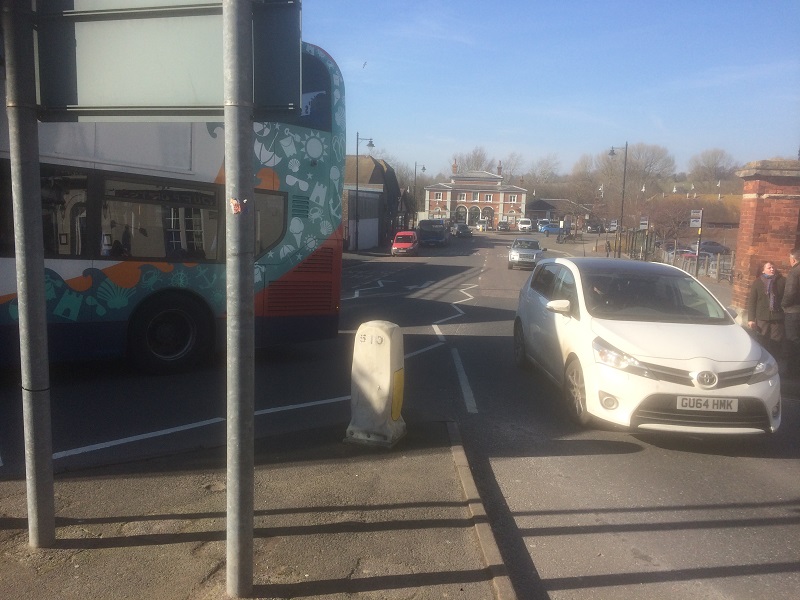There has been much in the media recently about the impact of the current crisis and a different world emerging when we start to put the coronavirus behind us. It is anticipated that, globally, new ways of thinking will emerge with a stronger emphasis on community and on sustainability. What might this mean for Rye?
The Rye Conservation Society is a community organisation that aims to conserve the best of the past, but always with an eye to Rye’s future and taking an interest in our unique town within its wider setting. To us, this seems a good time to consider how we can better work together to maintain and develop Rye as a thriving market town through this time of change.
When it comes to future aspirations, Rye is not short of plans. These include the almost street-by-street detail of the Rye Neighbourhood Plan, at district level we have Rother’s Core Strategy and draft Development and Site Allocation Plan as well as the draft Environment Strategy, East Sussex Council has a suite of planning and transport strategies at county level, whilst the nascent Transport for the South East is working on a plan for the entire region.
There is a common thread running through all of these plans, a declared commitment to promoting ‘good’ growth supported by ‘sustainable’ infrastructure and transport (that’s walking, cycling and public transport). These apparently aligned plans, combined with Rye’s rich array of community, natural and built assets, should mean that we are in a great position to see the town adapt in a post-Covid-19 world.
Opportunities are being missed
But to move beyond just plans, we need clear leadership and a lot of collaboration between the various authorities and stakeholders. Evidence suggests, however, that opportunities for this are being missed.
Recently Rye News reported on two gaps on either side of Rye, in the new England coastal path. The gap to the west is along Rye Harbour Road, where significant investment in new commercial units will generate traffic. The impact of this will be felt most significantly at the junction of the A259 and Rye Harbour Road.
The multiple agencies involved have not so far collaborated and, with no capacity or safety improvements planned for this junction, it will become more congested and hazardous to vulnerable pedestrians and cyclists.
That was the view taken by Natural England who have decided not to take their coastal path beyond Rye Harbour, so Rye becomes a gap rather than a gateway, so missing out on associated investment and benefit. This will also compromise Rye Harbour Nature Reserve’s wish to increase sustainable cycling and walking trips to the reserve and their new Discovery Centre.
Longer term parking plan needed
Parking is another issue that has held the town in thrall for some time. The local authorities have been at odds with some stakeholders over the best means to control and supply parking space. On control, civil parking enforcement (CPE) is set to be with us soon. As for parking space, this may be a matter of better management and collaboration between authorities as much as as it is about supply as Rye News has already reported.
Rye will certainly continue to rely on well managed parking, but perhaps the time has come to think beyond where we store cars. There is an opportunity for this coming up in the form of a ‘Transport Review’ for Rye that has been promised by East Sussex County Council. Work on this review is planned to follow the introduction of CPE.
So, if not only parking, what would a comprehensive transport review cover? Rye Conservation Society would like to see greater consideration of mobility for all, including our ageing population and the many households in Rye that have no access to a car.
We would also like to see sustainable travel considered as part of Rye’s visitor offer. This is where Rye really could excel with its compact and attractive town centre and fairly good local and regional public transport access. If this was complemented by targeted investment in facilities and connecting-up existing paths and cycle routes, we could revolutionise access between Rye and the surrounding countryside and coast.
Imagine what might be possible
Imagine day-trippers arriving by train, picking up a hire bike at the station to cycle to Camber Sands or Rye Harbour, perhaps with time to stop off for a meal in Rye on their return.
Imagine a family holidaying for longer, but leaving their car at Gibbet March for the week whilst they use the local path and cycle network to access the numerous attractions and hostelries the area has to offer. Local people would benefit from year round access and perhaps an easier alternative to driving.
So what specific proposals might a transport strategy for Rye include? We wouldn’t be starting from scratch as there are already some ideas in the Rye Neighbourhood Plan and its list of ‘community aspirations’. Possible proposals could include:
- new pedestrian / cycle bridges over the river Brede to connect with Rye Harbour Road and over the river Tillingham to connect residents with schools and leisure facilities;
- transforming Station Approach from a vehicle racetrack to a gateway that welcomes pedestrians, bus and rail users;
- a new section of road on the A259 east of Rye between East Guldeford and Guldeford Lane Corner, removing two railway level crossings in order to reduce delays and accidents. This will also enable railway line upgrade in the future; and
- finding a happy compromise between vehicle and pedestrians to co-exist along the High Street.
None of this will be achieved without a concerted effort to co-ordinate plans, to engage the community and to make compelling cases that will attract external funding. The Rye Conservation Society, along with many other local stakeholders, is looking forward to getting involved to make this happen.
Image Credits: Kevin McCarthy .



